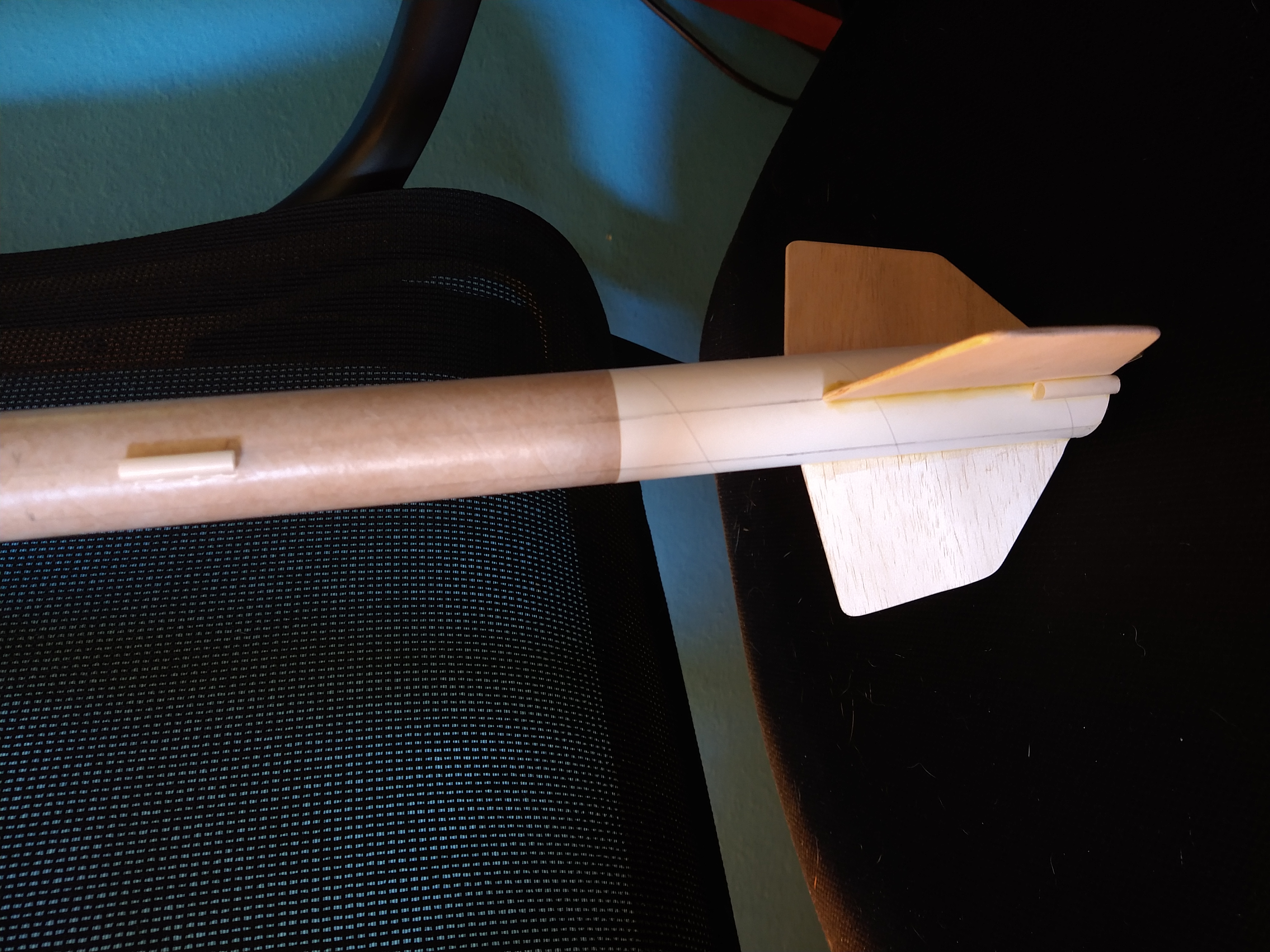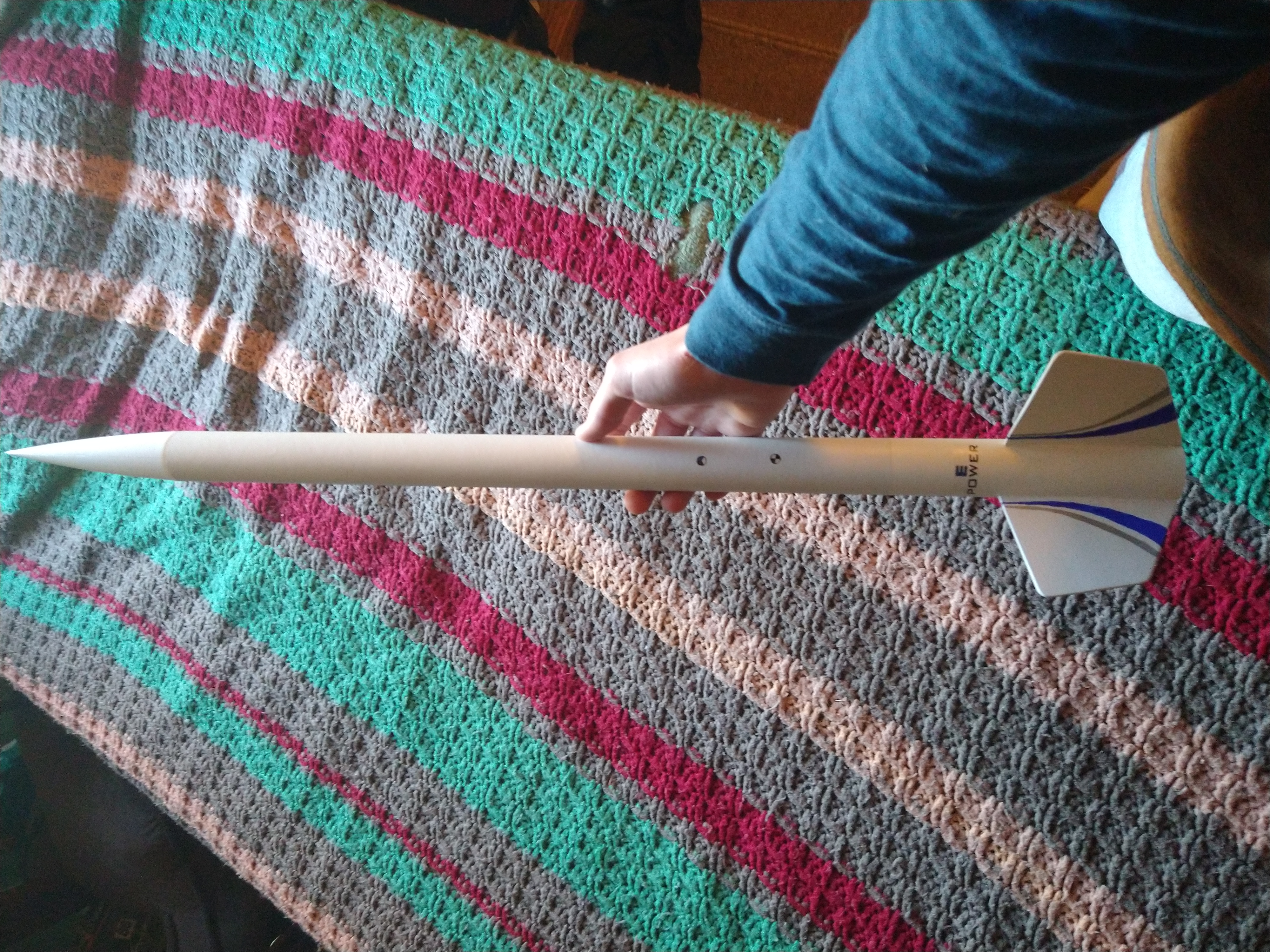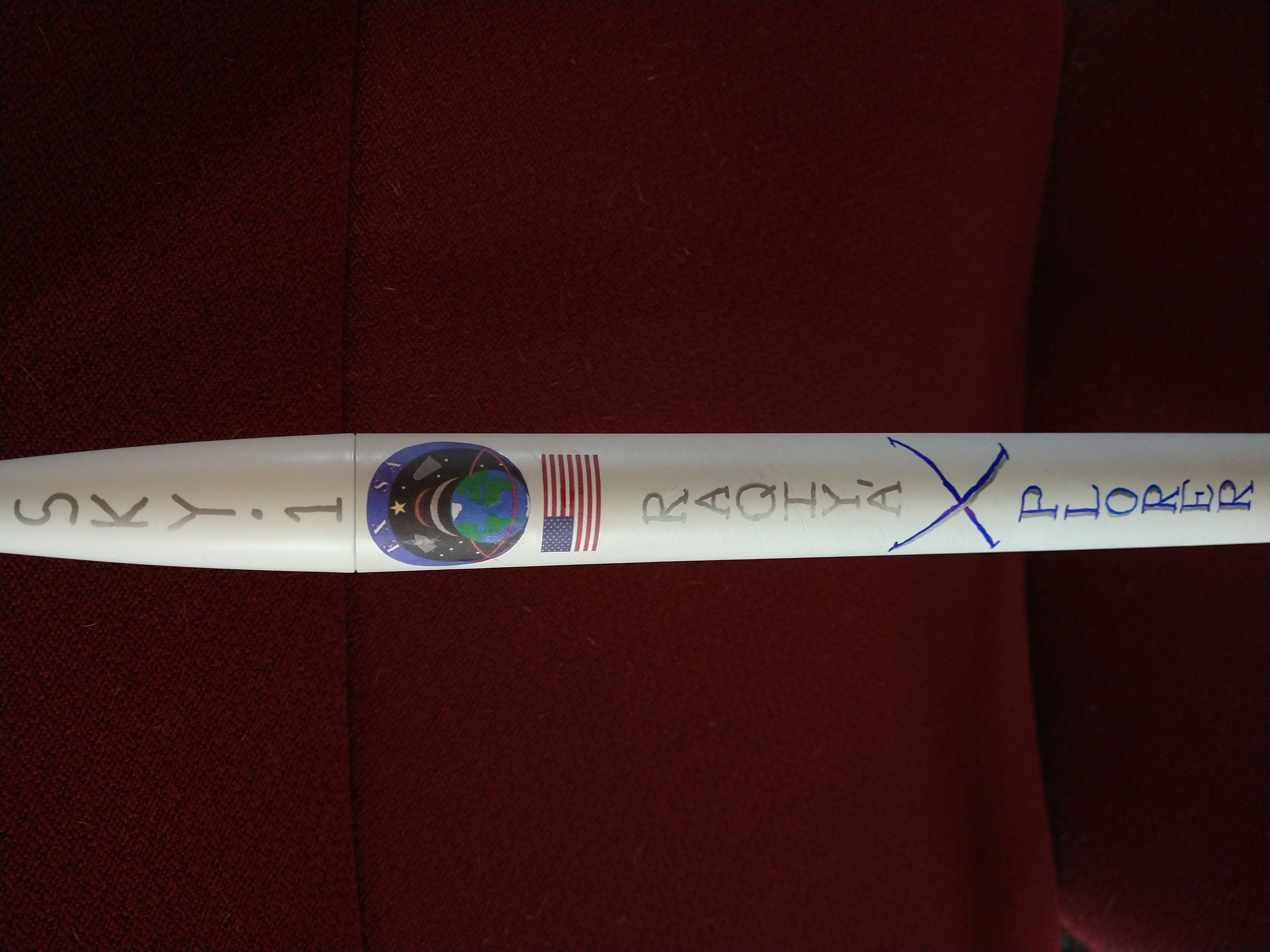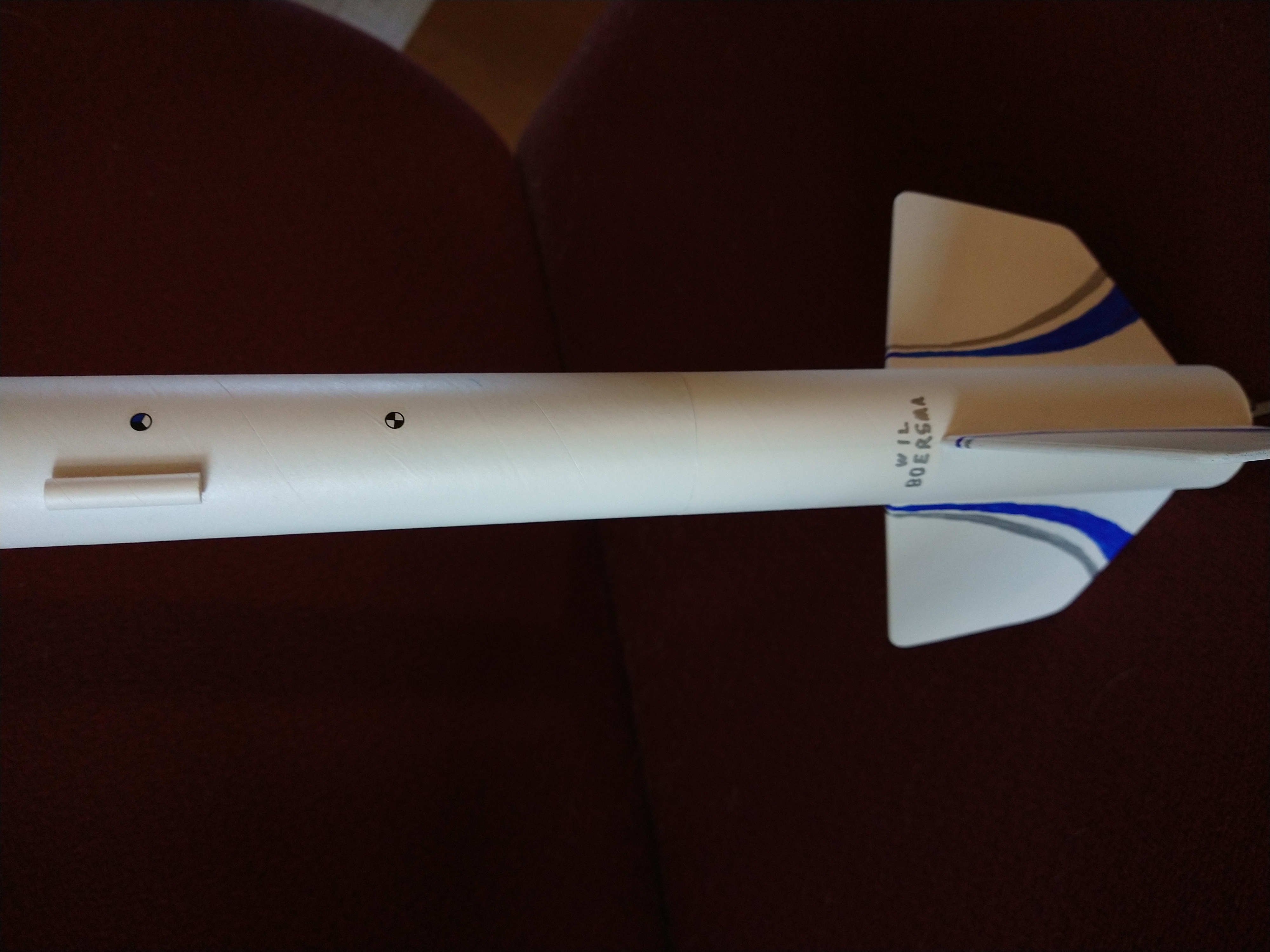"The Skyshot"
Raqiya' Xplorer (SKY-1) is my first attempt at mid-powered, higher altitude rocketry with D and E engines, and also the first in Project Skyshot. It was completed on February 13th, 2022. It was the first rocket I used water-slide decals on and homemade papercut glue-on stickers.
I didn't know what I was going to call SKY-1 at first, even through construction. Previous possible names were Motive, Arduous and Nova Stella. In the end, I chose Raqiya' Xplorer. The first word raqiya' is the hebrew word used in Genesis 1 translated into English as "firmament" or "expanse" and describes outer space. Xplorer is a pun on "explorer" so the name basically means "space explorer".
I constructed SKY-1 fairly stock, however I did imploy the "fin-side" launch lug placement technique (gluing the launch lug to the body tube right next to the fins in stead of directly inbetween two) first used on Newcomer II and my new Universal Parachute System. I made a slight modification to the system for SKY-1 where I added a second keyring for the skockcord. This is because the eyelet on the nose cone is very small and I thought it would be hard to move the keyring through the eyelet if the fat shockcord was taking up all the room. Indeed, when there is a new can tab in the keyring and it expands, it just barly fits through the eyelet as is. For more on the "UniChute" system visit the NC-IV Ascention page.
This was my first kit with two engine mount centering tubes, however it was esentially the same as one with only own tube except with a "repeat with second tube" step and placing them on either end of the tube instead of one in the center. I made a fin stripe pattern using shaprie modeled after the original Space Launch System (SLS) rocket "racing stripes" seen on the SRBs in early design renders. In real life, they traded out the stripes for more practical black boxes, but I thought they looked cool and adapted them to my rocket.
I brought it to the monthly launch by Spaceport Rocketry Association (SRA) on March 19th, 2022. It was my third flight of the day and it was around 1:30pm. It was a good flight, with low amounts of weather cocking and successful parachute deploymewnt. At apogee. Due to the heights it was at when the main deployed it was blown away out of sight before it hit the ground, so I didn't really know where to look for it. It was almost the exact same fate as Newcomer I on it's third flight. When I last saw it is was directly above the right end of the line of trees going perpendicular to the "launch road" downrange, we were standing beside the club's trailer in the crowd that gathers there.
There was a large brush fire (not caused by rockets, but by a motorcycle sliding into a ditch and catching grass on fire with it's engine) down range may have created an updraft and kept the rocket from descending as it was blown away. This I say because it seemed to stop going down at a certain point, and just getting smaller and harder to see (because of the smoke, I assume).
The announcer and the other club officers or experienced rocketeers told me not to angle the rod, but to go straight up, despite the fact that this seemed to aide in recovering closer to the launch pad. For SKY-1. I don't think this would have made a difference, but for some of my other rockets, namely Newcomer 3, it seems that it would have helped alot. I am not exactly sure why they told us not to do that, because it was reasonably windy. My mom thought that maybe it was because they wanted to be able to see the rockets deploy their chutes for the announcment, since the wind was coming from the south, or up range, and was behind the annoucners and the trailer probably made it harder to see there. The sun was also in that section of the sky, so it is a possible explanation.
However, I reaffirm the determination that dual-deployment or even simply a smaller parachute is nessasary for any subsequent flights, especially mid-powered. Some sort of delay would also help, but if it enters a ballistic descent nose-first it could speed up to a chute-tearing velocity and shred any recovery devices deployed. A Jolly Logic Chute Release would work perfect, but they are simply too expensive. Perhaps SKY-2 Betelgeuse Booster will be my first dual-deployment rocket.
| F# | Specifics | Notes | ||||||||||
|---|---|---|---|---|---|---|---|---|---|---|---|---|
| F1 |
|
Partial-success. Used two long sheets of Recovery Wadding and angled rod straight up. Low weathercocking during ascent, good parachute deployment. However it deployed very near apogee and was very high up, and was blown away out of sight, very similar to what happened during Newcomer I, Flight 3. It is possible the large brush fire (not caused by rockets) down range may have created an updraft and kept the rocket from descending as it was blown away. Not a failure as I gained experience with mid-powered rockety, despite not recovering it. |
Hover over images to read the "tool tip" info about them, and click to open it full size in another tab.

|

|

|

|

|

|

|
|
Updated 3/19/2022 by William Boersma